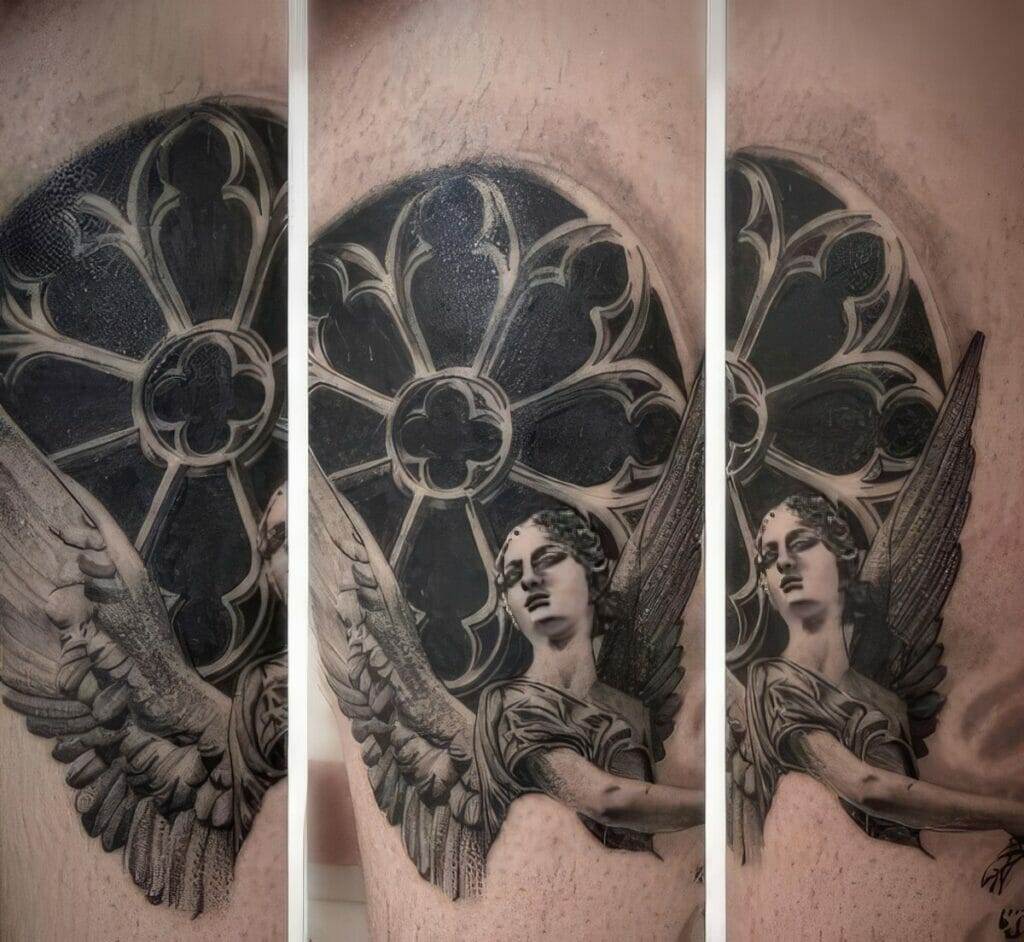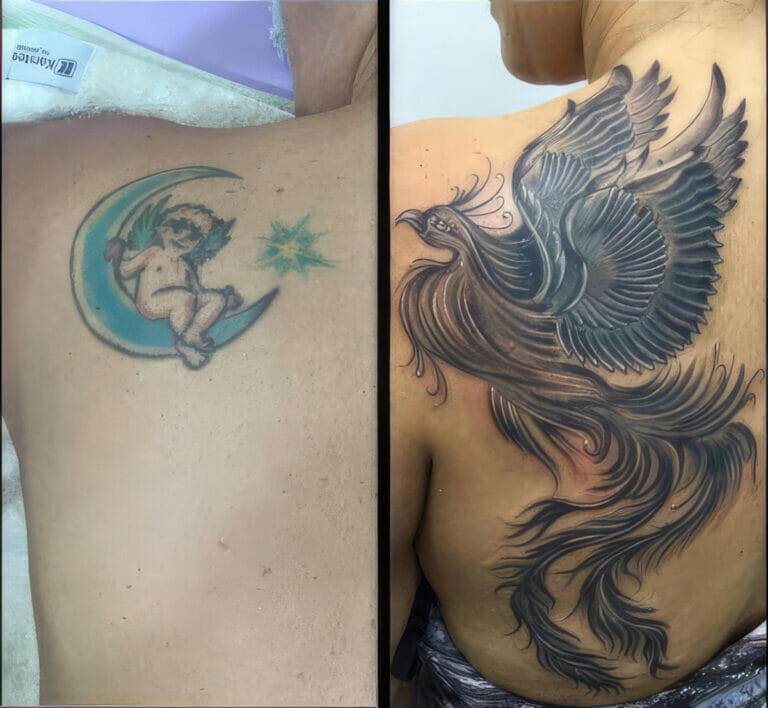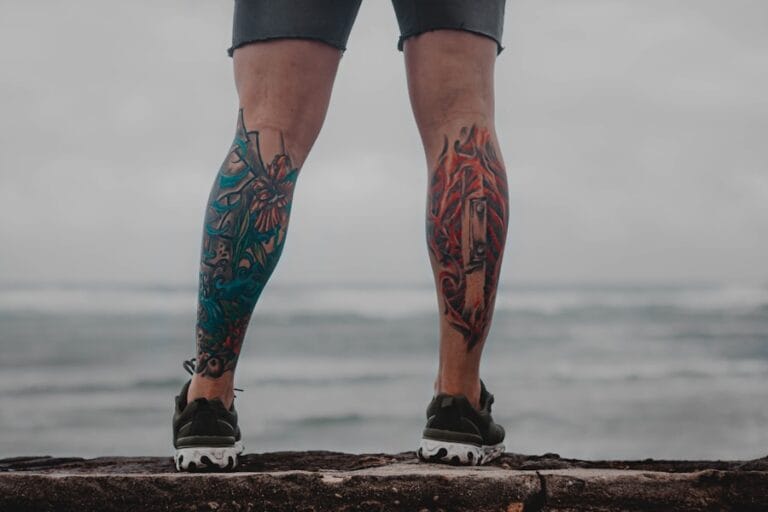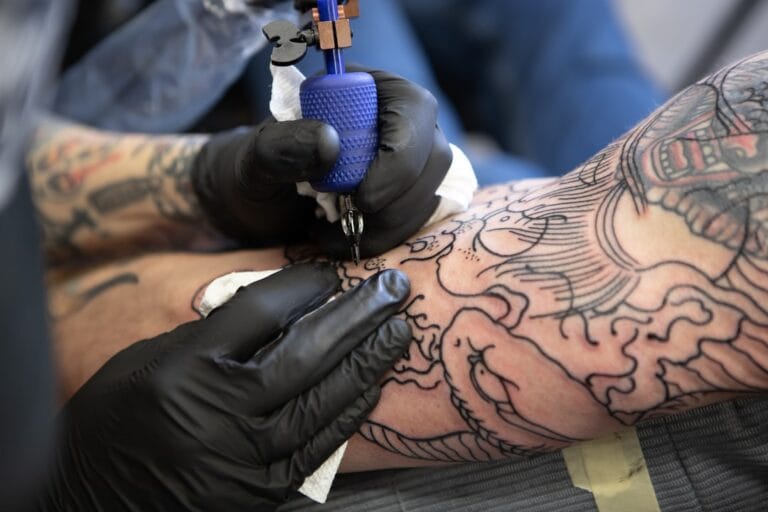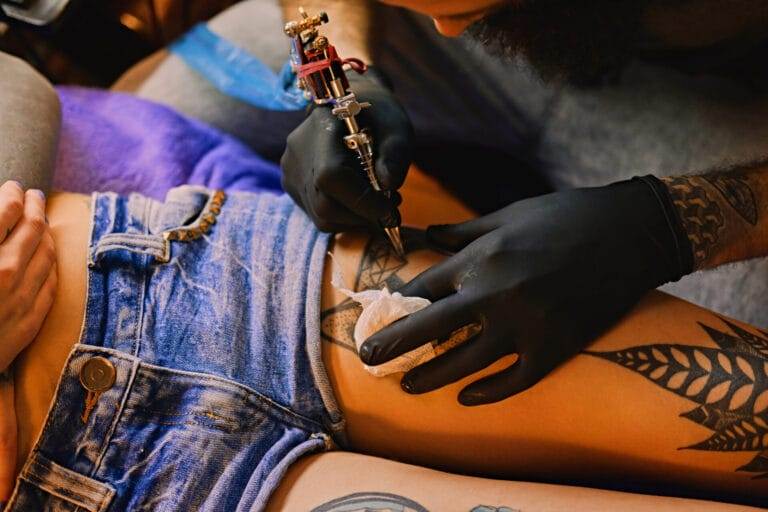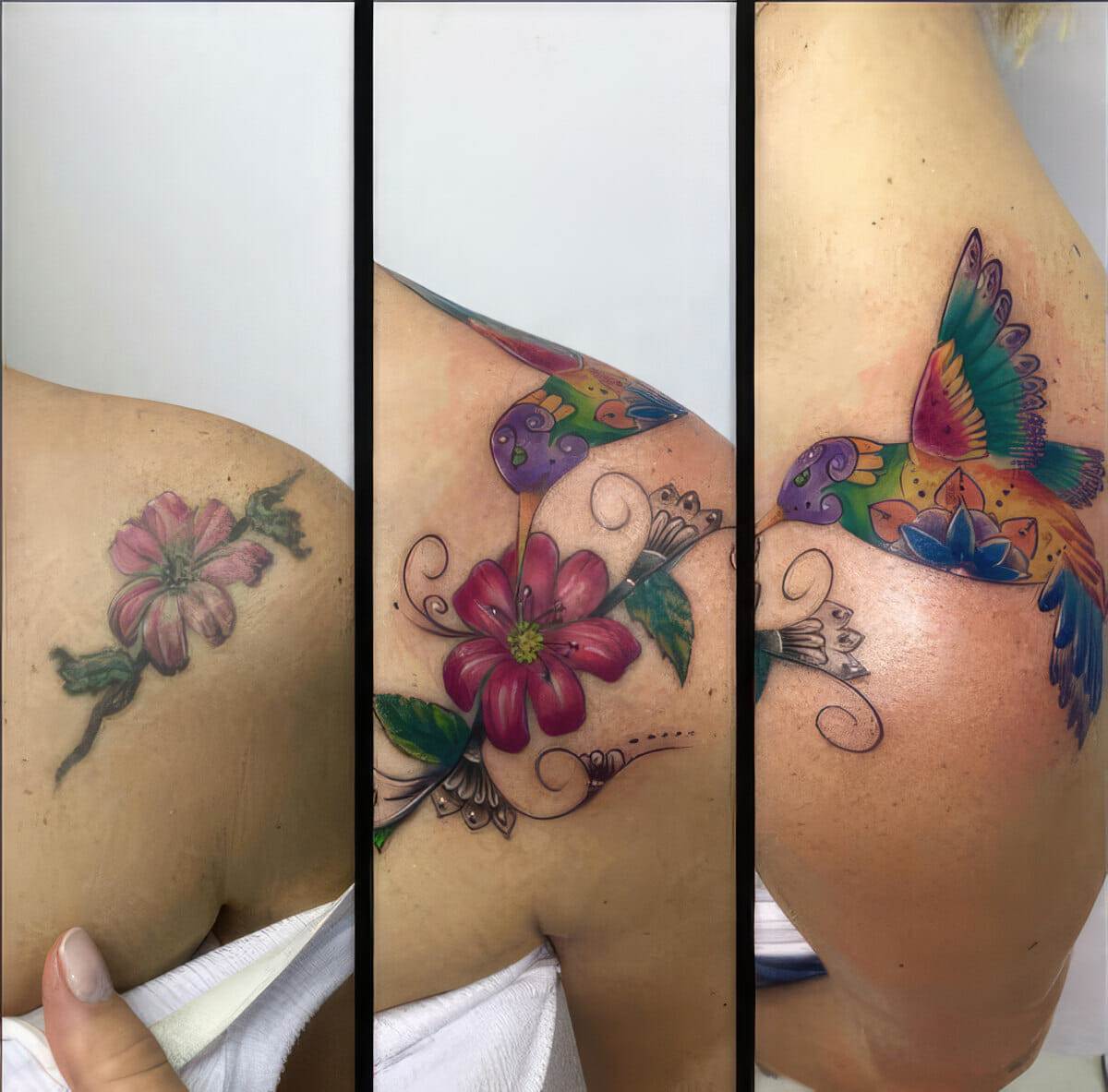
Realism tattoos have become increasingly popular in recent years, captivating tattoo enthusiasts and artists alike. These tattoos are known for their incredible detail and lifelike quality, making them appear as if they have been painted or drawn directly onto the skin. Unlike other tattoo styles that may focus on bold lines and vibrant colors, realism tattoos aim to replicate the appearance of real objects, people, or scenes. This style of tattooing requires a high level of skill and precision, as artists must be able to capture every intricate detail and shading to create a truly realistic image.
The Rise of Realism Tattoos: A Brief History
The history of realism tattoos can be traced back to the early days of tattooing, where artists would use rudimentary tools and techniques to create simple designs on the skin. However, it wasn’t until the 20th century that realism tattoos began to gain traction. Artists like Norman “Sailor Jerry” Collins and Don Ed Hardy pushed the boundaries of tattoo artistry by incorporating more realistic elements into their designs.
Advancements in tattoo technology and techniques have also played a significant role in the rise of realism tattoos. With the introduction of more advanced tattoo machines and pigments, artists were able to achieve finer details and smoother shading. Additionally, the availability of high-quality reference materials, such as photographs and digital images, has made it easier for artists to accurately replicate real-life subjects.
The Magic of Realism Tattoos: What Makes Them So Special?
What sets realism tattoos apart from other tattoo styles is their ability to create an illusion of depth and dimension on the skin. These tattoos often feature intricate details such as wrinkles, textures, and shadows that give them a three-dimensional appearance. This level of detail requires a great deal of skill and precision on the part of the artist.
Creating a successful realism tattoo involves careful observation and attention to detail. Artists must study their subject matter closely, paying attention to every nuance and subtlety. They must also have a deep understanding of light and shadow, as well as the ability to replicate these effects on the skin. The result is a tattoo that looks as if it has been lifted directly from a photograph or painting.
Getting Ready for a Realism Tattoo: What to Expect
Before getting a realism tattoo, there are a few steps you should take to ensure that you are prepared for the process. First and foremost, schedule a consultation with your chosen artist. During this meeting, you will discuss your tattoo idea, review any reference materials you have gathered, and determine the best placement and size for your tattoo.
Once you have agreed on the design and placement of your tattoo, your artist will create a stencil or transfer of the design. This will allow you to see how the tattoo will look on your body and make any necessary adjustments before the actual tattooing begins.
On the day of your tattoo appointment, it’s important to come prepared. Make sure you have eaten a good meal beforehand and are well-hydrated. Dress in comfortable clothing that allows easy access to the area being tattooed. Depending on the size and complexity of your tattoo, the process can take several hours, so be prepared to sit still for an extended period of time.
During the tattooing process, it’s normal to experience some discomfort or pain. However, everyone’s pain tolerance is different, so it’s important to communicate with your artist if you are feeling uncomfortable. They may be able to make adjustments or offer suggestions for managing the pain.
After your tattoo is complete, your artist will provide you with aftercare instructions. It’s important to follow these instructions carefully to ensure proper healing and minimize the risk of infection or complications. Keep the tattoo clean and moisturized, and avoid exposing it to direct sunlight or soaking it in water until it has fully healed.
The Process of Creating a Realism Tattoo: From Sketch to Skin
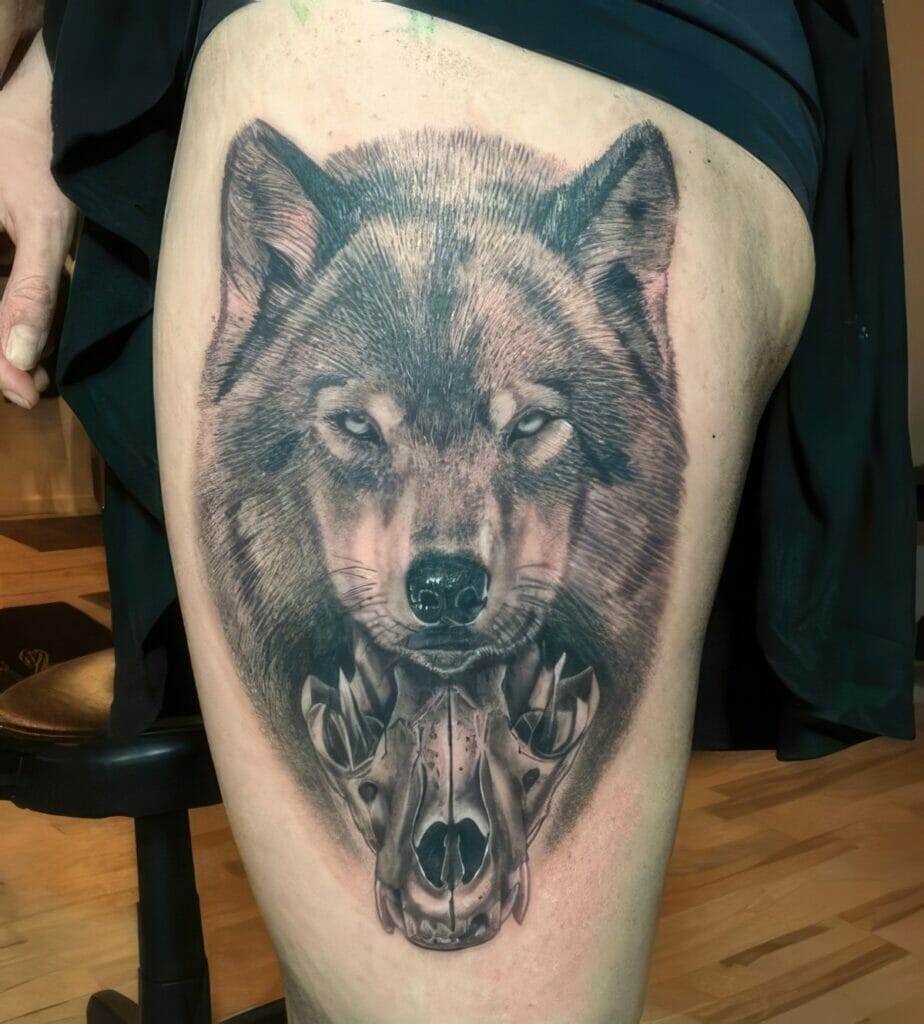
Creating a realism tattoo is a multi-step process that requires collaboration between the artist and the client. It begins with an initial consultation, where the client discusses their tattoo idea with the artist. During this meeting, the artist will ask questions, gather reference materials, and take measurements to ensure an accurate representation of the subject matter.
Once the design has been finalized, the artist will create a sketch or digital rendering of the tattoo. This allows both the artist and the client to visualize how the final tattoo will look on the skin. The client will have an opportunity to provide feedback and make any necessary adjustments before giving their final approval.
With the design approved, the artist will then create a stencil or transfer of the design. This is applied to the skin, allowing the artist to outline the design and ensure proper placement. Once the outline is complete, the artist will begin adding shading and detail to bring the tattoo to life.
Throughout the tattooing process, the artist and client will continue to communicate and collaborate. The client may provide feedback or make requests for adjustments, and the artist will work to ensure that the final tattoo meets their expectations. This collaborative approach is essential in creating a successful realism tattoo that accurately represents the client’s vision.
Realism Tattoos as a Form of Self-Expression: Telling Your Story
One of the most powerful aspects of realism tattoos is their ability to tell a story. These tattoos can be used to express personal experiences, beliefs, or emotions in a visual and permanent way. Whether it’s a portrait of a loved one, a symbol of strength and resilience, or a representation of a significant event, realism tattoos allow individuals to share their stories with the world.
For both the artist and the client, realism tattoos can hold deep emotional significance. The process of creating and receiving a realism tattoo can be cathartic and healing, allowing individuals to process and commemorate important moments in their lives. The level of detail and precision required in realism tattoos also adds to their emotional impact, as every line and shading carries meaning.
The Power of Realism Tattoos: Healing and Transformation
Realism tattoos have the power to heal and transform not only individuals but also entire communities. For many people, getting a realism tattoo is a way to reclaim their bodies and their stories. It can be a form of empowerment, allowing individuals to take ownership of their experiences and express themselves in a meaningful way.
There are countless stories of individuals who have used realism tattoos as a tool for healing and transformation. From survivors of trauma or illness who use tattoos to mark their journey to individuals seeking closure or resolution, these tattoos can serve as a powerful reminder of strength and resilience. The process of getting a realism tattoo can be a transformative experience in itself, allowing individuals to confront their fears, embrace their vulnerabilities, and emerge stronger on the other side.
Realism Tattoos and Cultural Identity: Celebrating Heritage
Realism tattoos can also be a way to celebrate cultural heritage and identity. Many individuals choose to incorporate symbols, images, or motifs from their cultural background into their tattoos as a way to honor their roots. These tattoos serve as a visual representation of cultural pride and can help individuals feel connected to their heritage.
Cultural representation in tattoo art is incredibly important. It allows individuals from marginalized communities to see themselves reflected in the art form and helps to challenge stereotypes and misconceptions. Realism tattoos that celebrate cultural identity can be a powerful way to reclaim narratives and challenge dominant narratives.
Realism Tattoos and Pop Culture: Paying Homage to Icons
Realism tattoos are not limited to personal stories or cultural symbols; they can also be used to pay homage to pop culture icons and symbols. From movie characters and musicians to iconic works of art, realism tattoos allow individuals to express their love and admiration for the things that have shaped their lives.
These tattoos can serve as a form of nostalgia, reminding individuals of the joy and inspiration they felt when they first encountered these icons. They can also be a way to connect with others who share similar interests or passions. Realism tattoos inspired by pop culture can spark conversations, create connections, and serve as a visual representation of shared experiences.

The Timeless Appeal of Realism Tattoos
Realism tattoos have become increasingly popular in recent years, captivating tattoo enthusiasts and artists alike. Their ability to replicate real-life subjects with incredible detail and precision sets them apart from other tattoo styles. Realism tattoos are not just about creating a beautiful image on the skin; they are about telling stories, expressing emotions, and celebrating identity.
Whether it’s a portrait of a loved one, a symbol of personal strength, or a tribute to a pop culture icon, realism tattoos have the power to transform and heal. They allow individuals to reclaim their bodies and their stories, to honor their heritage, and to connect with others who share similar experiences. Realism tattoos are more than just ink on the skin; they are a form of art and self-expression that will continue to captivate and inspire for years to come.

